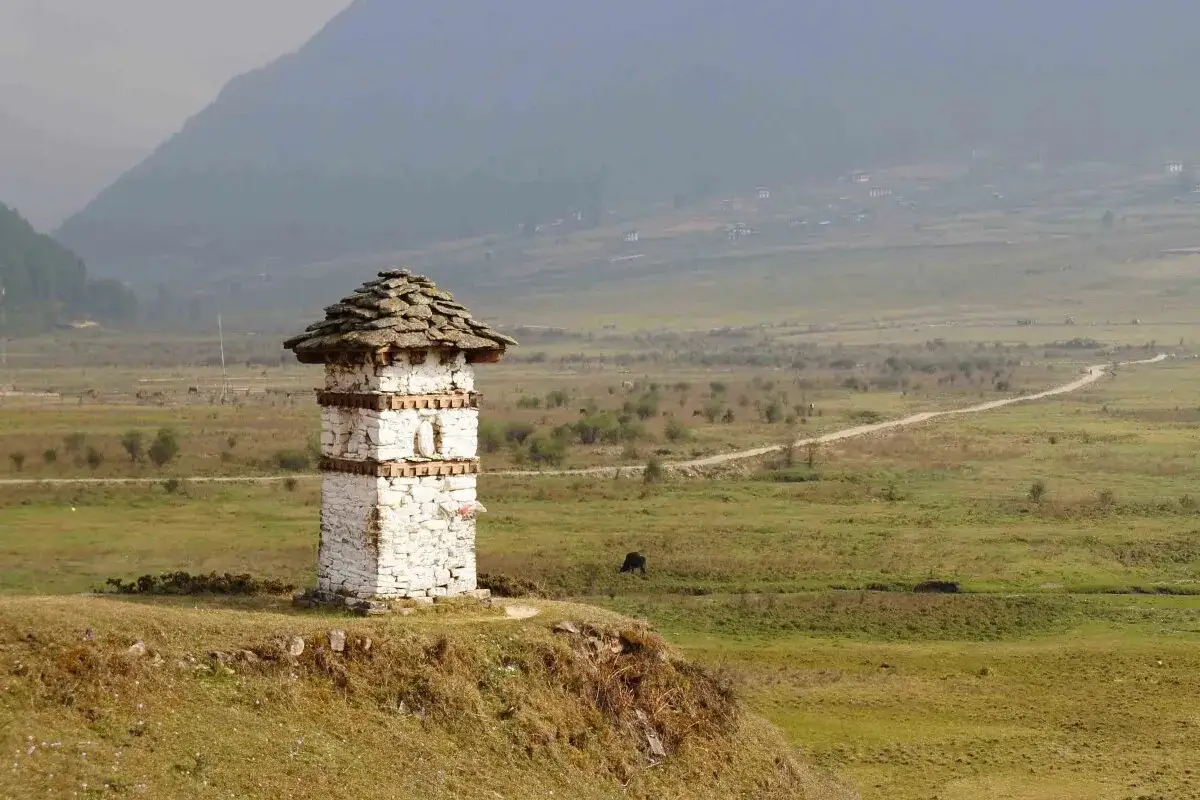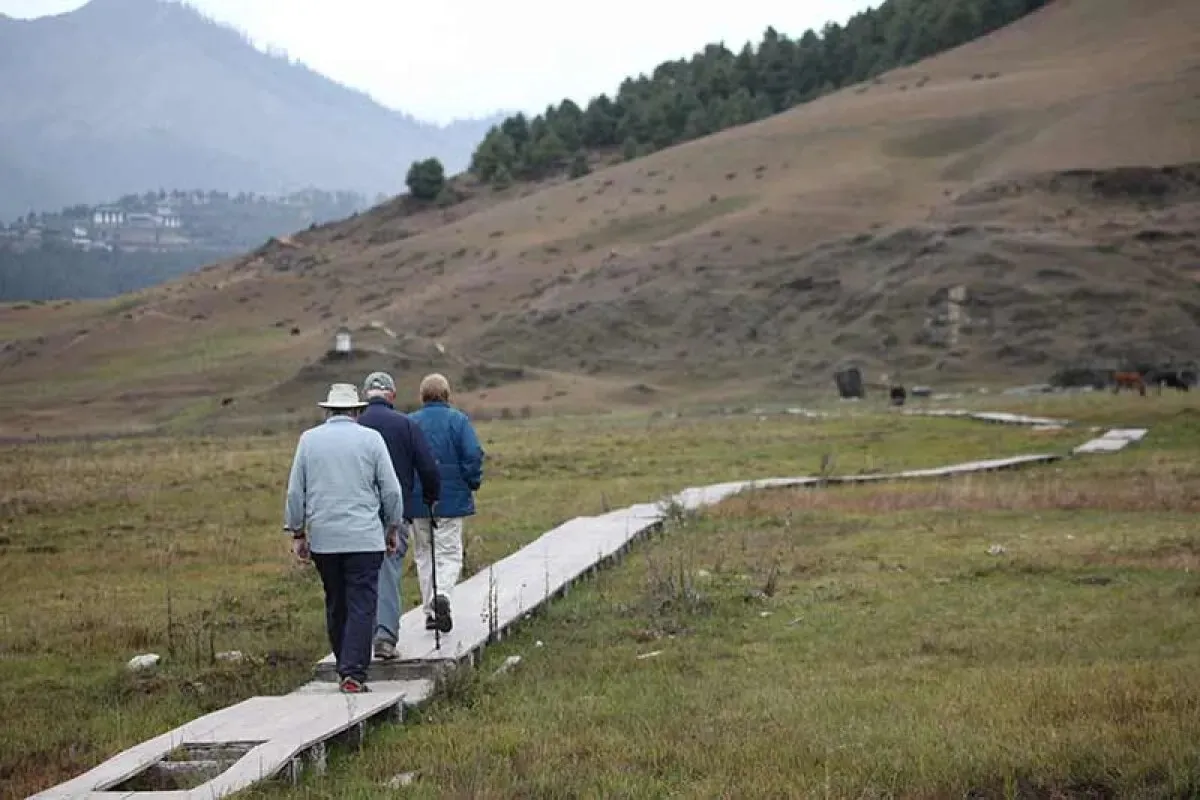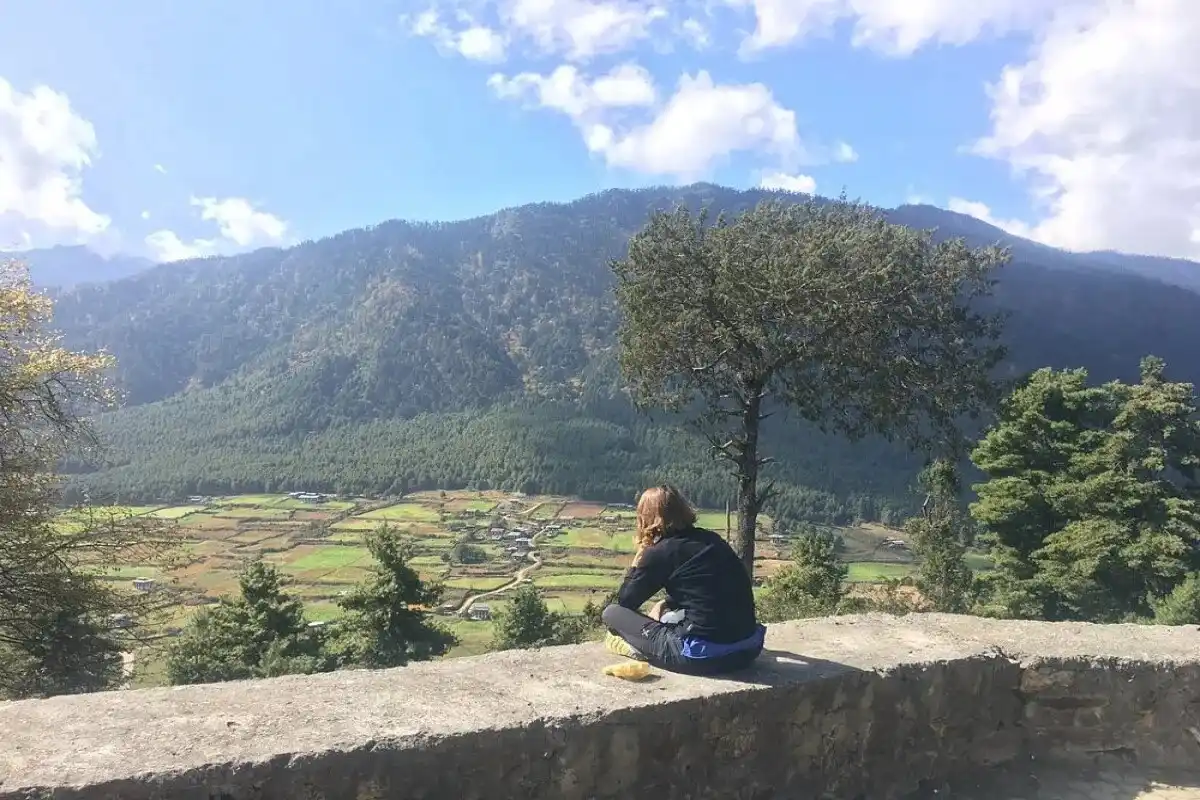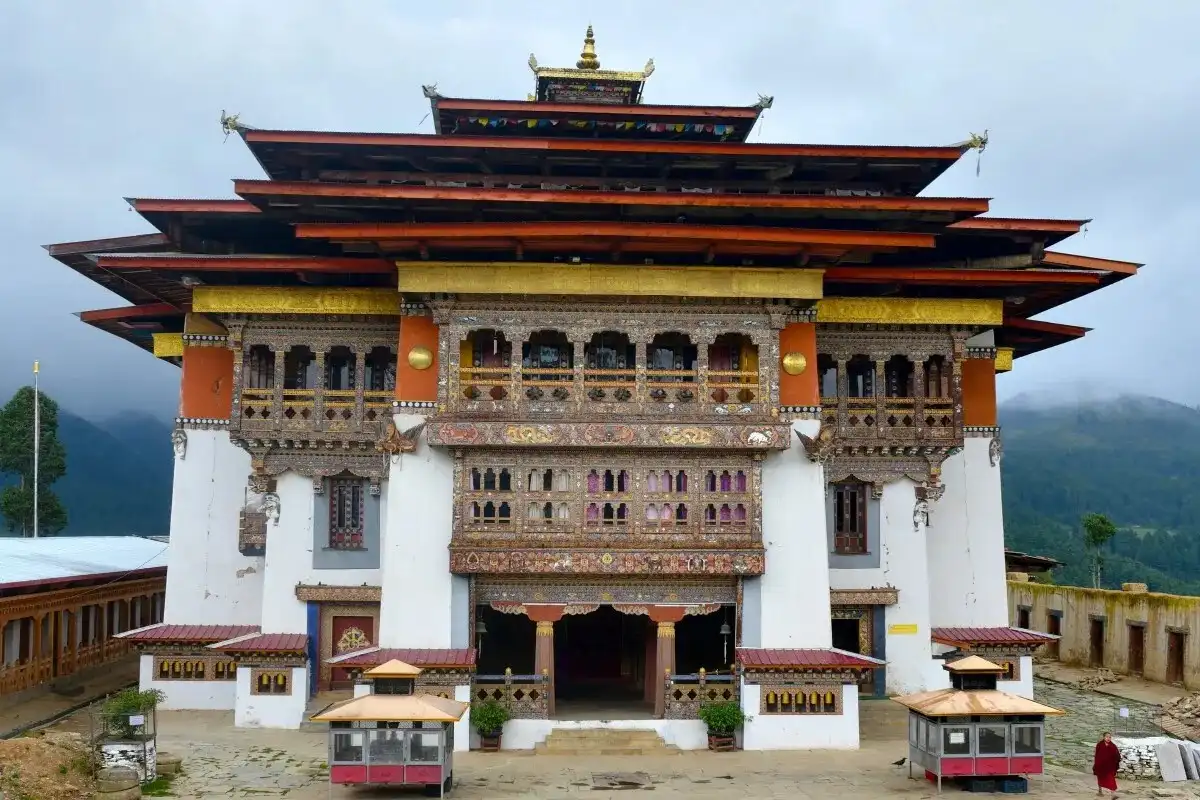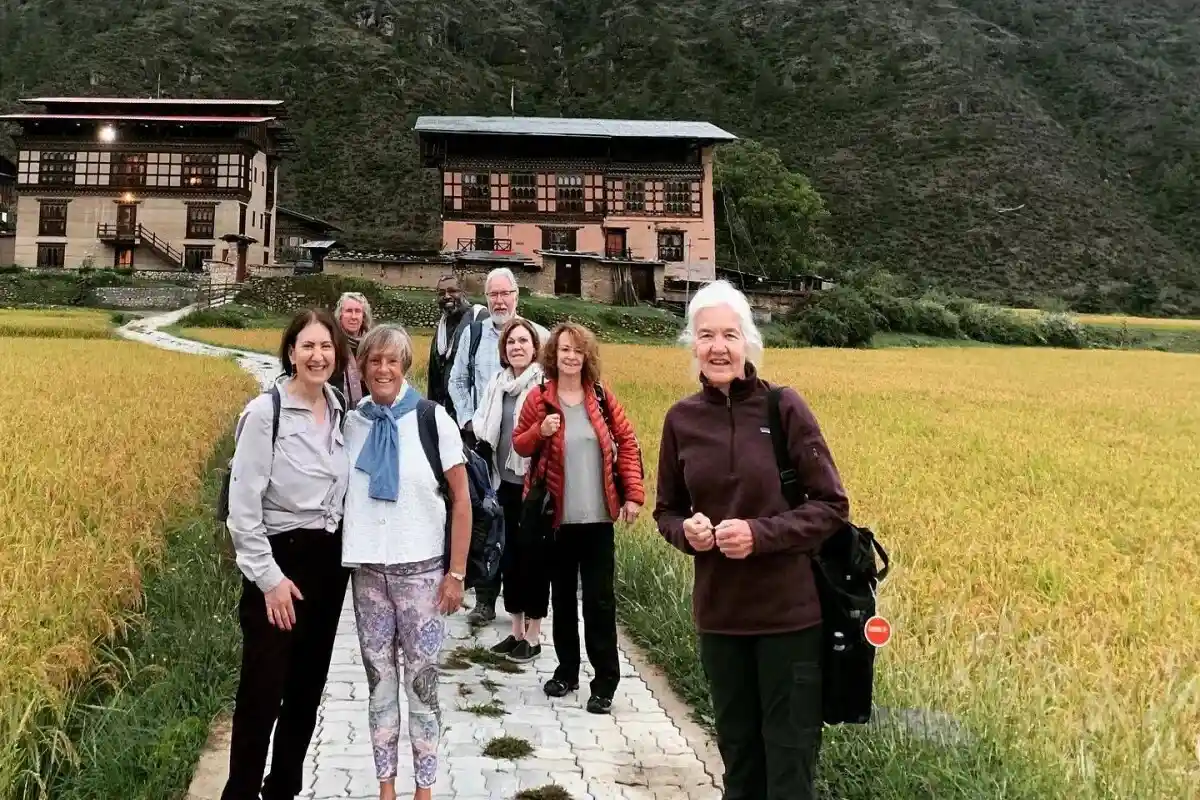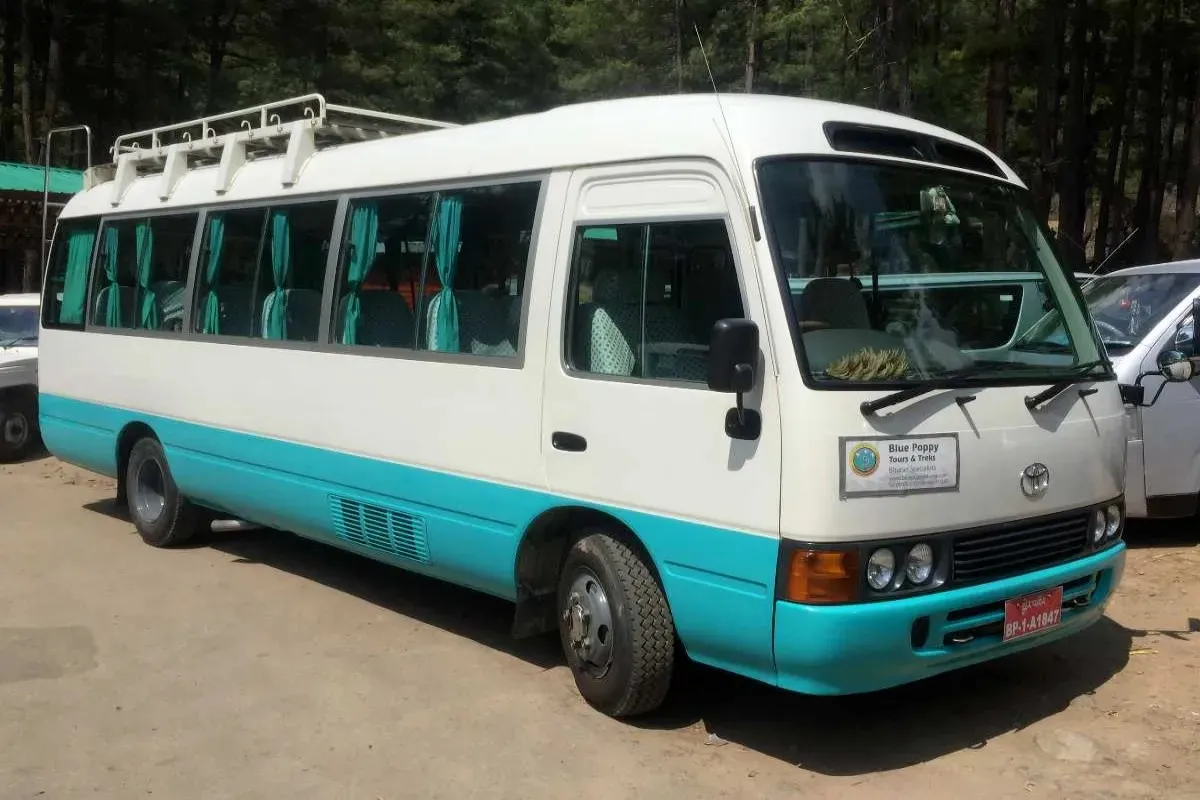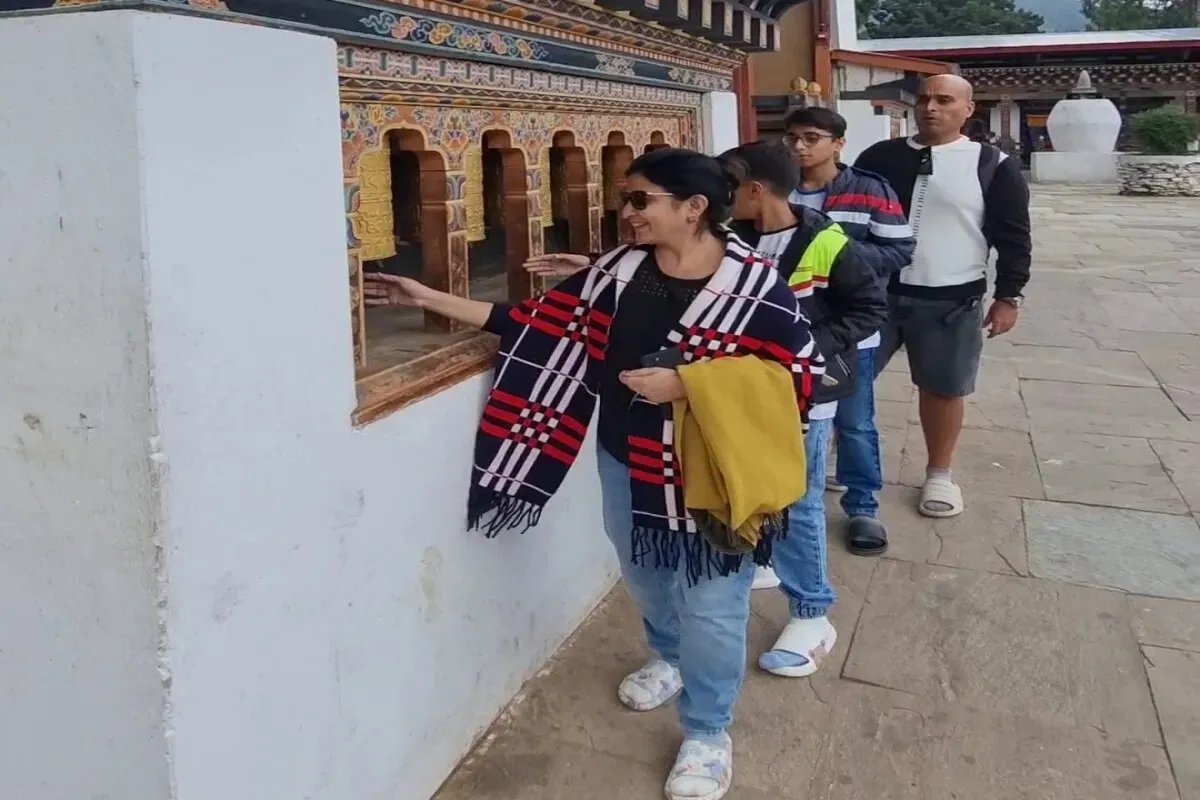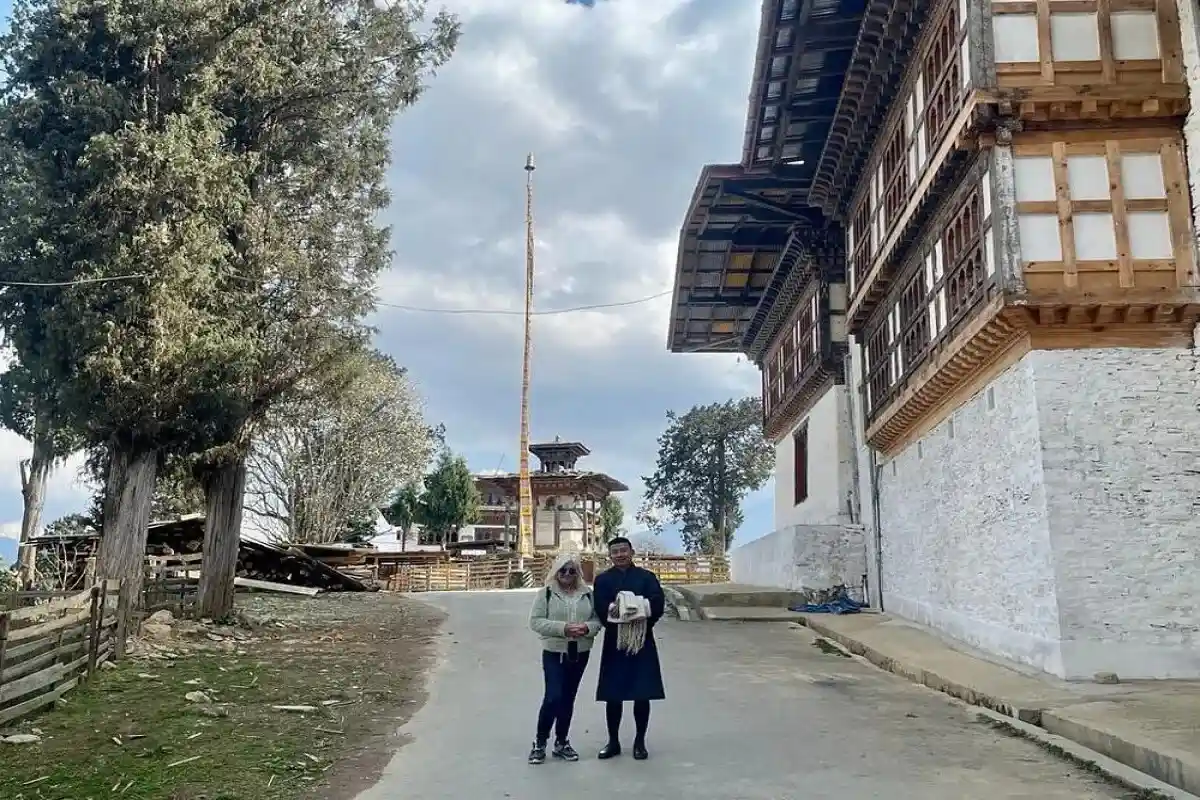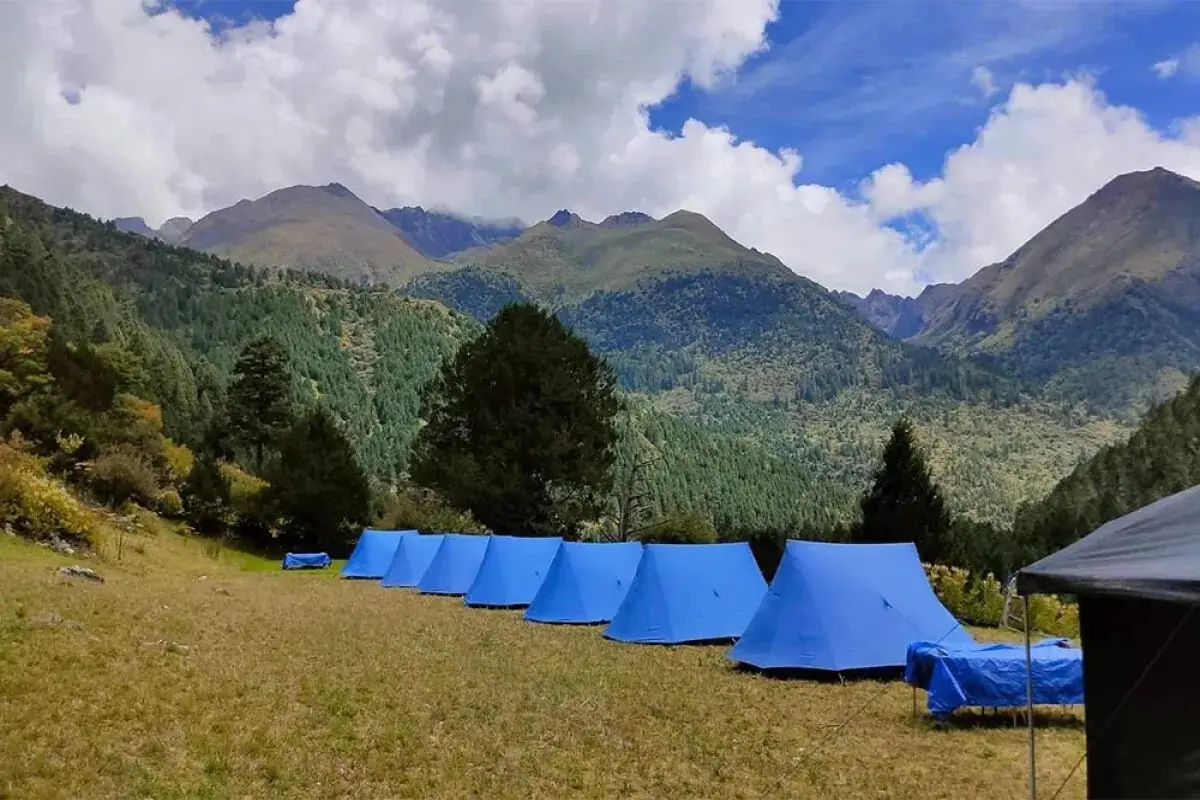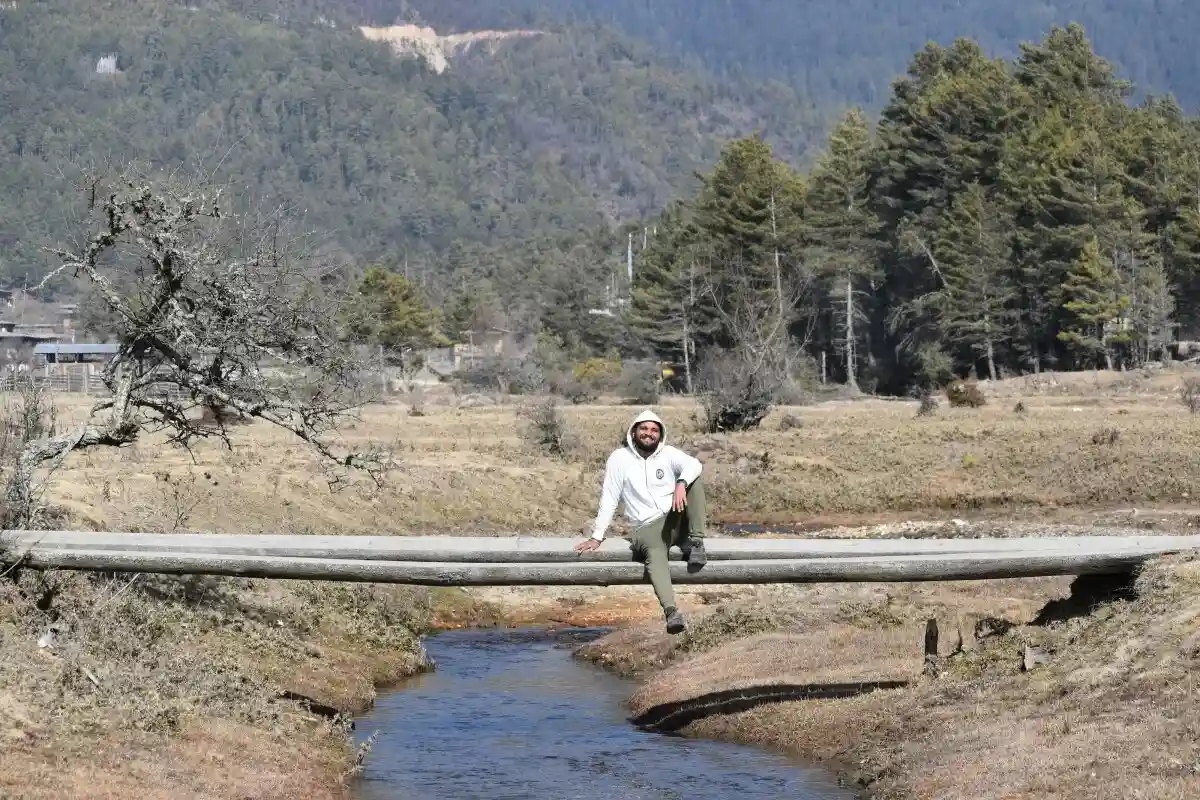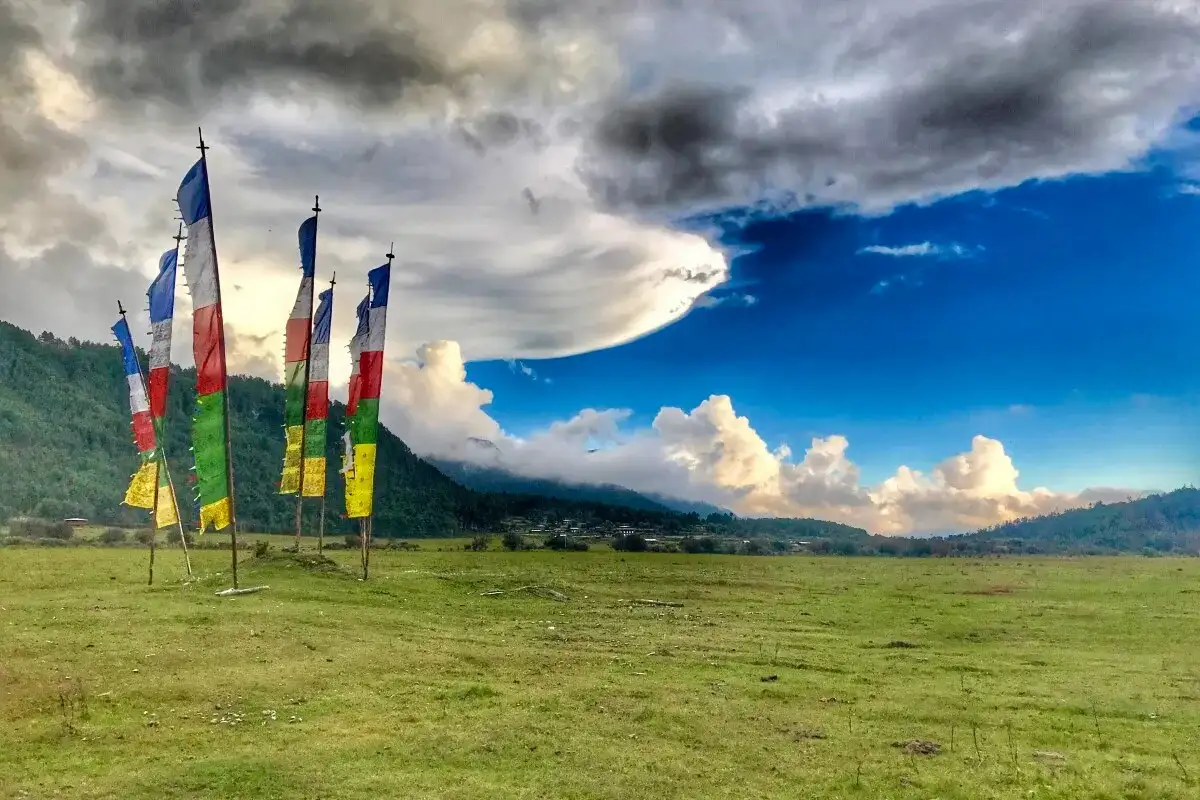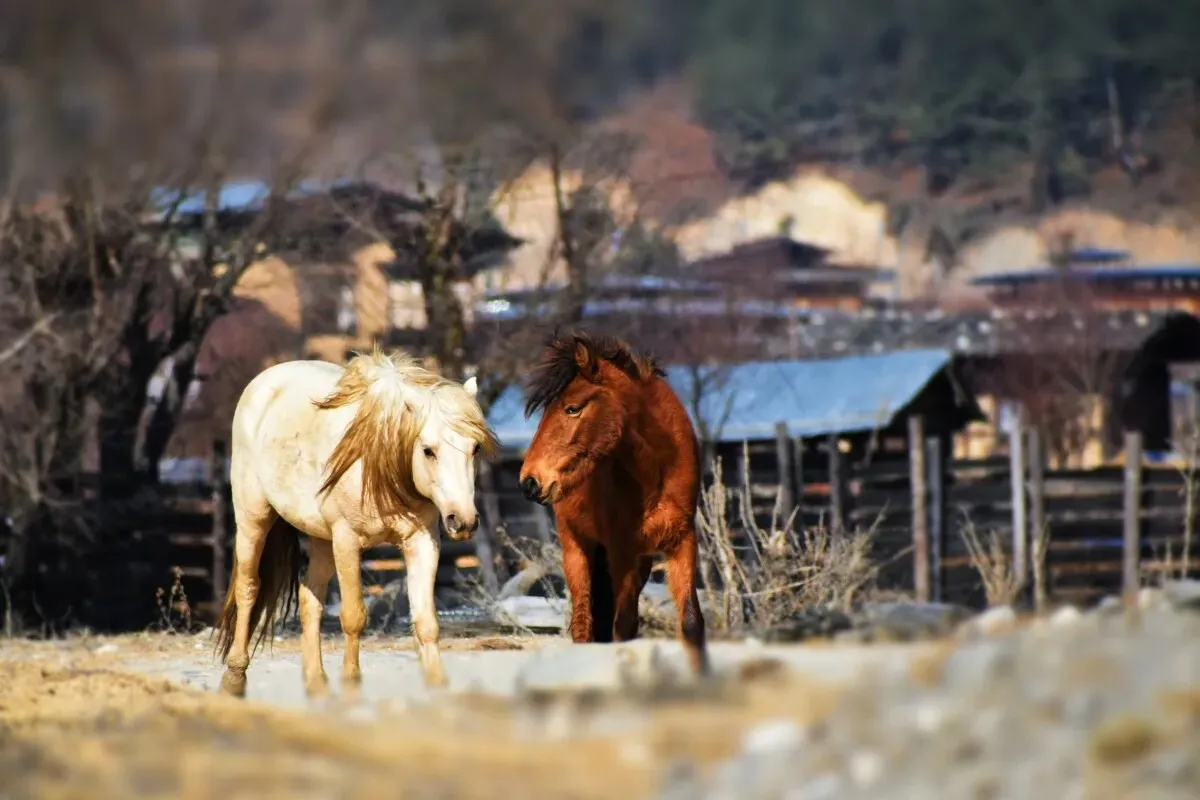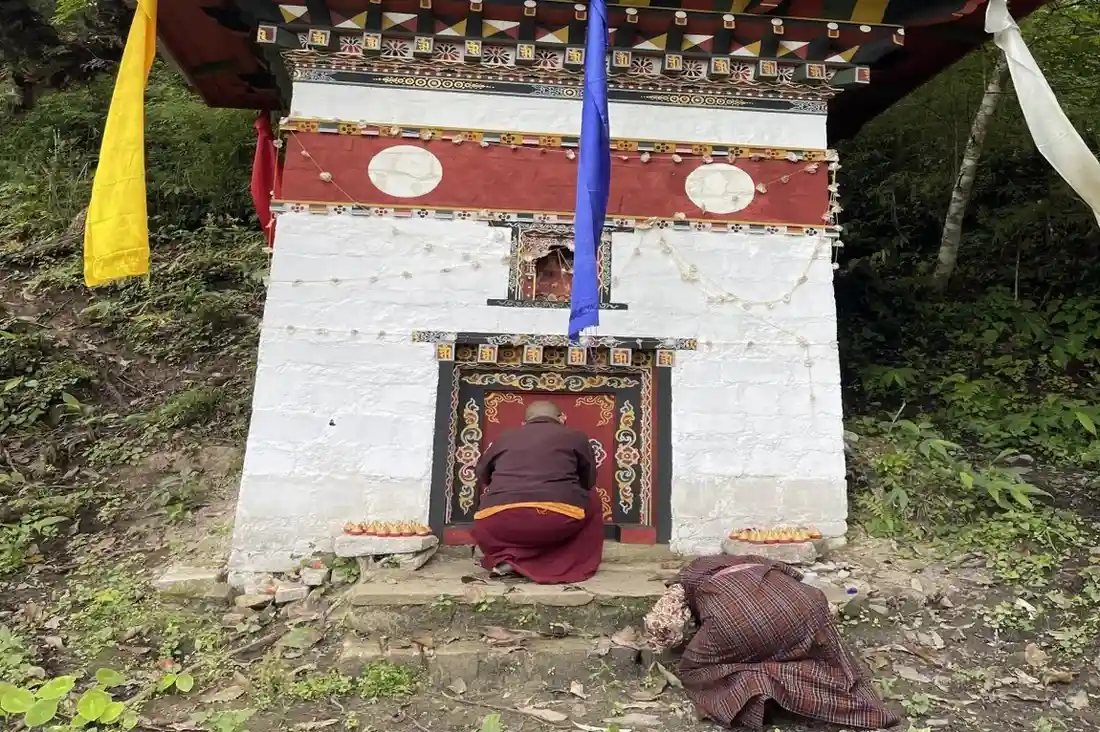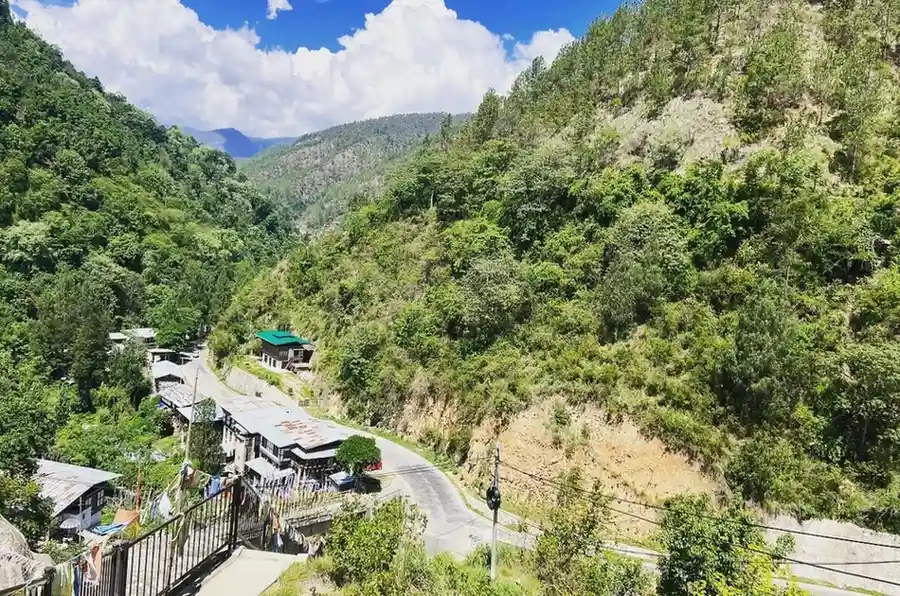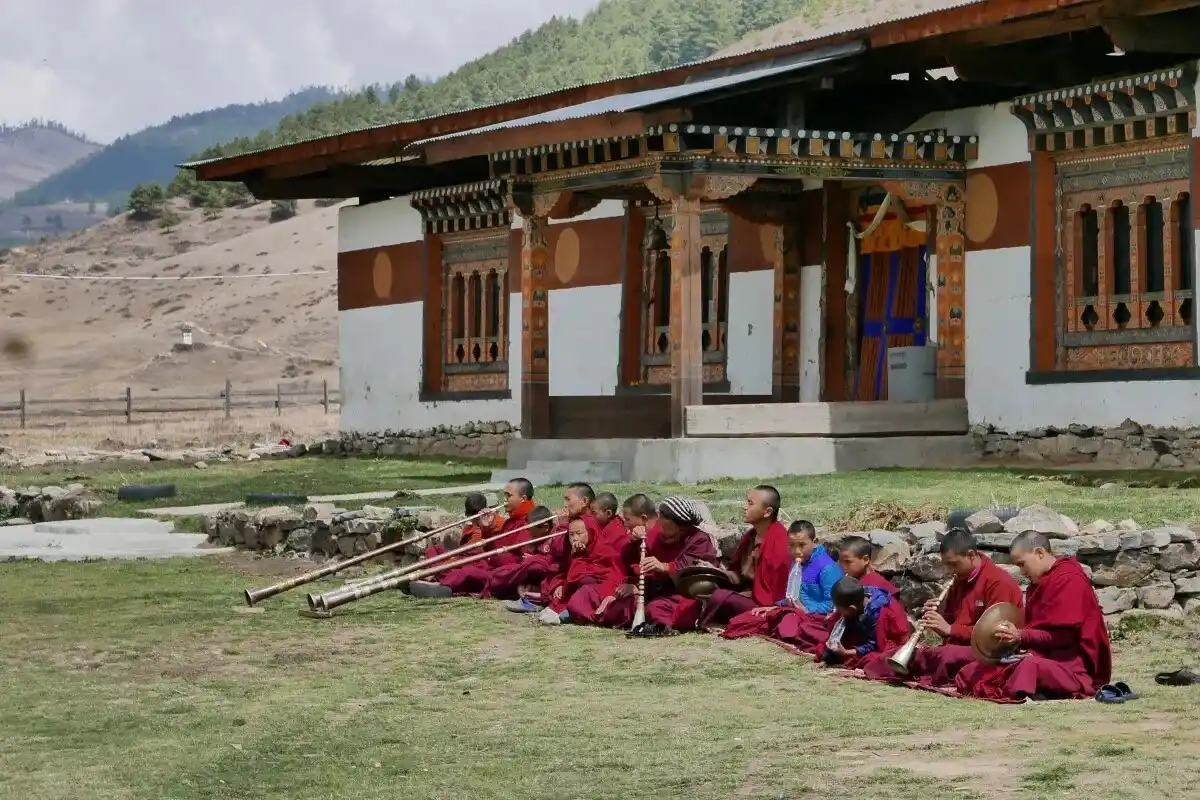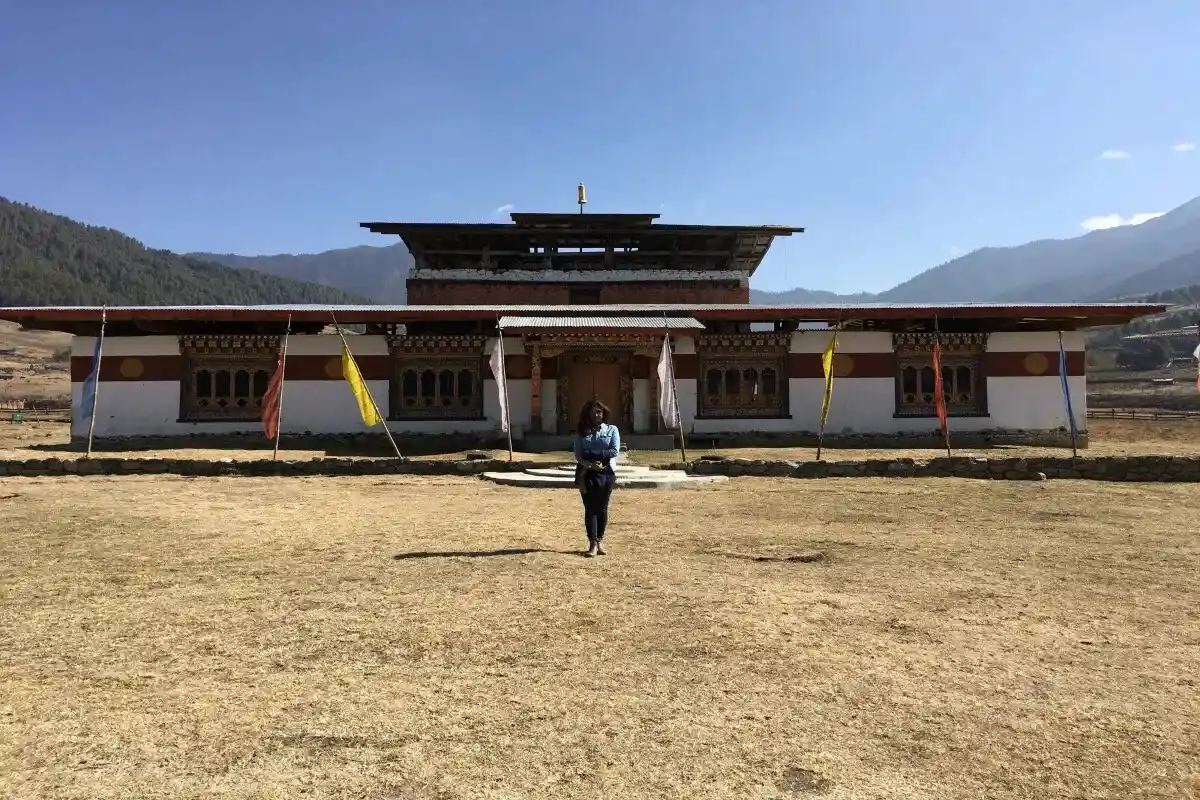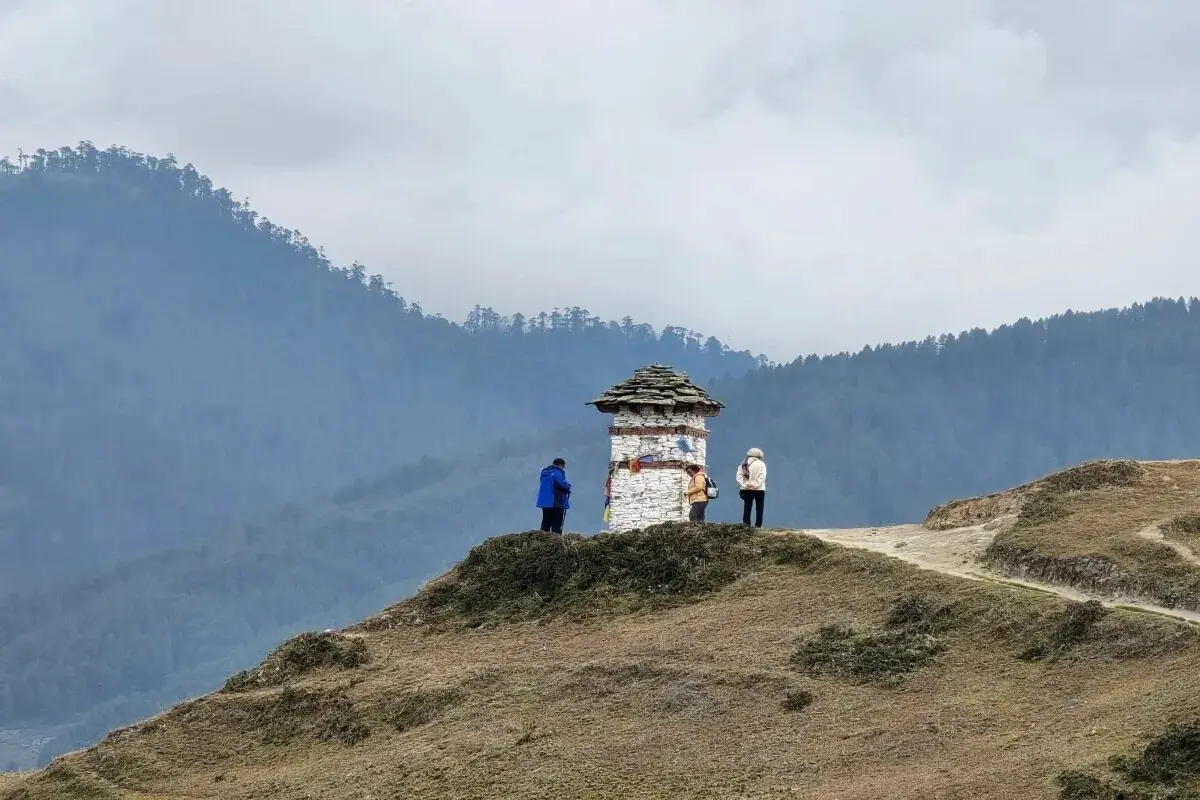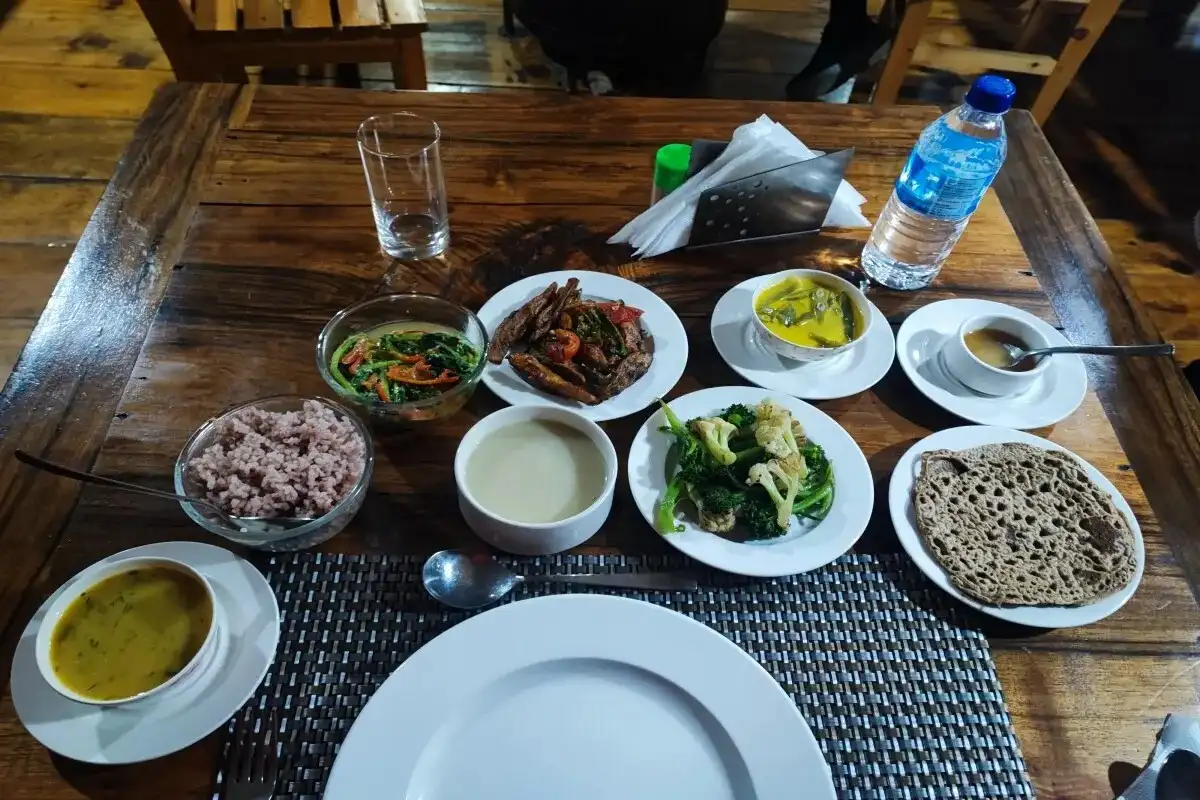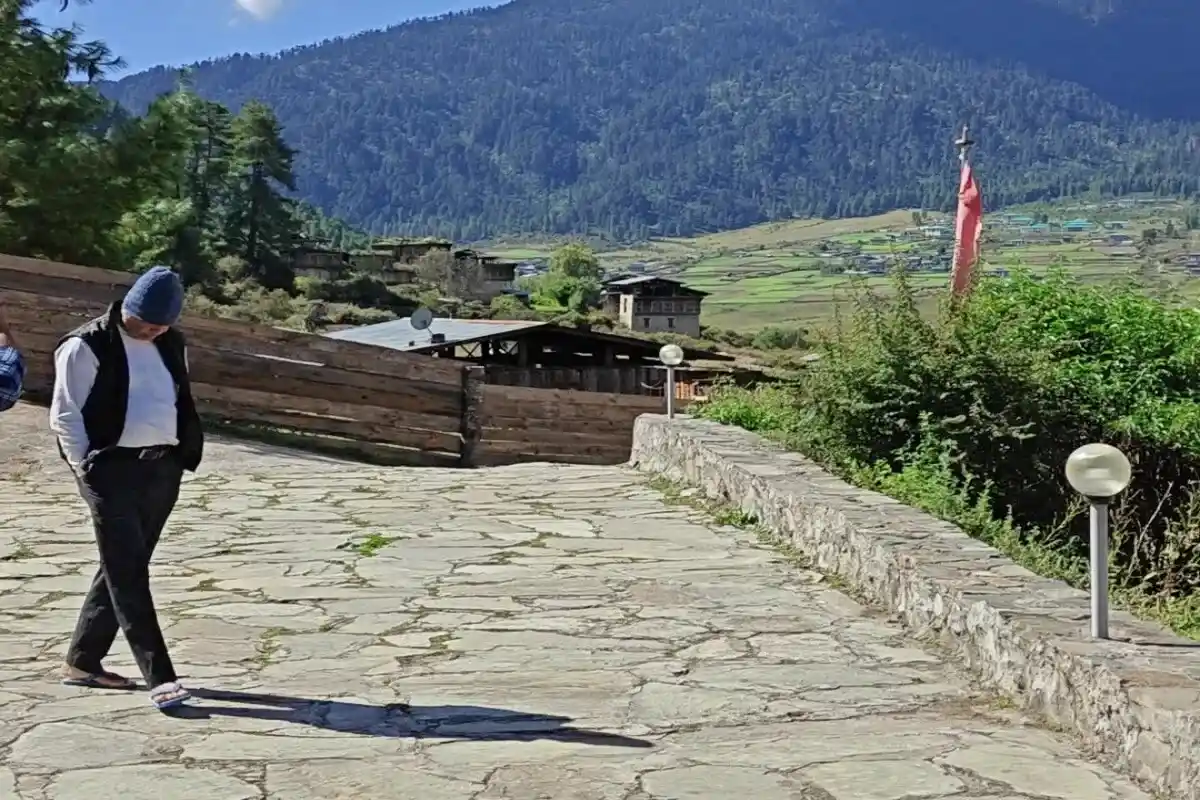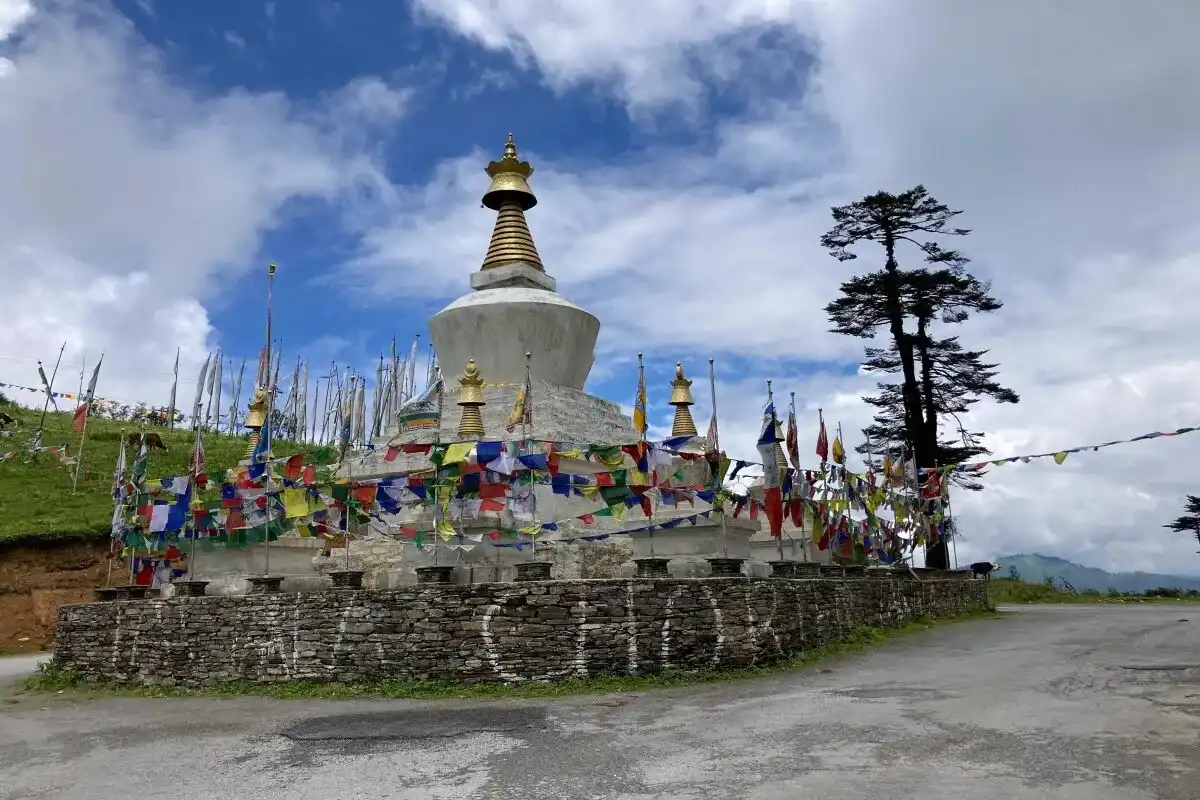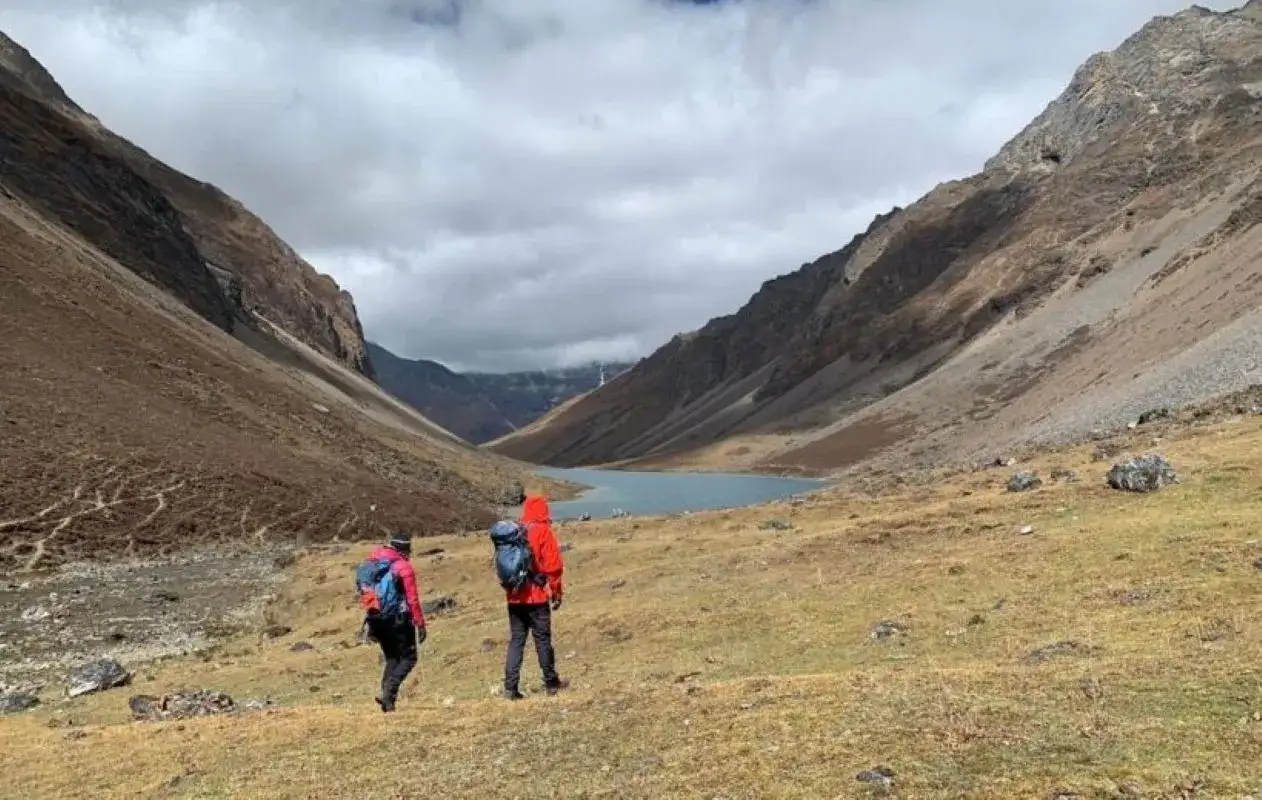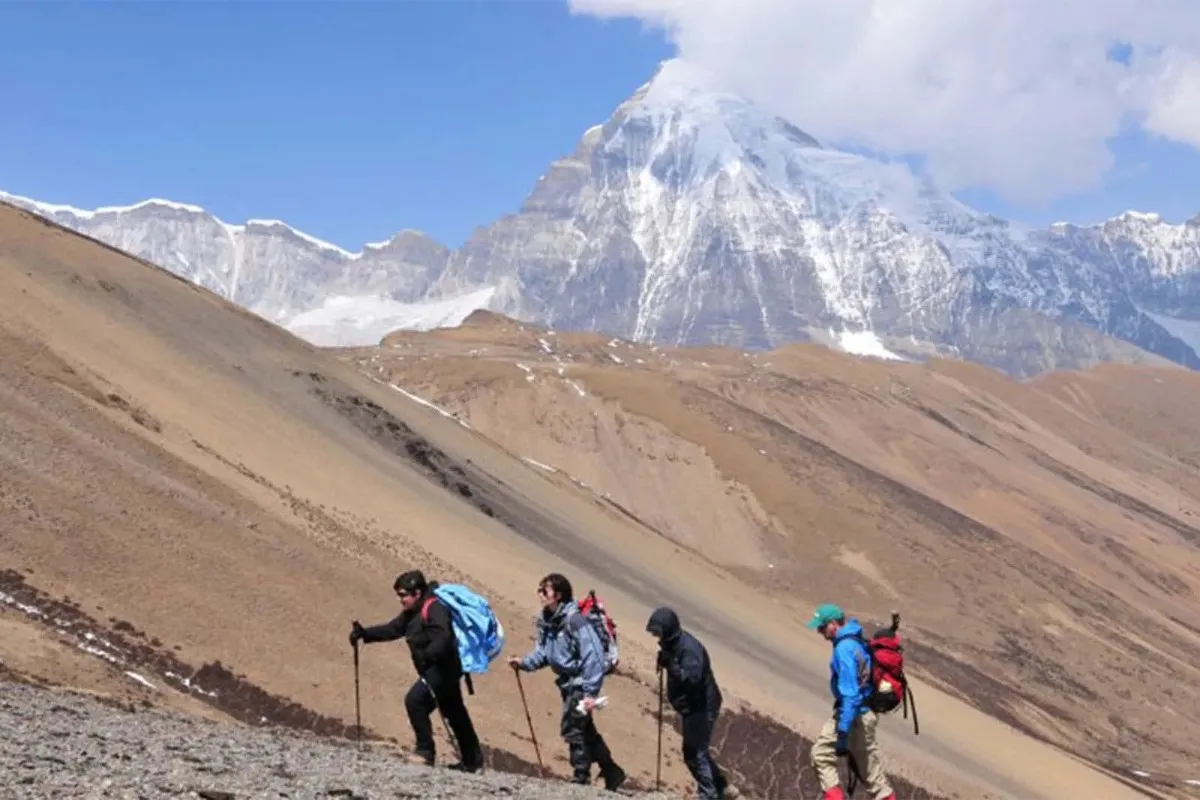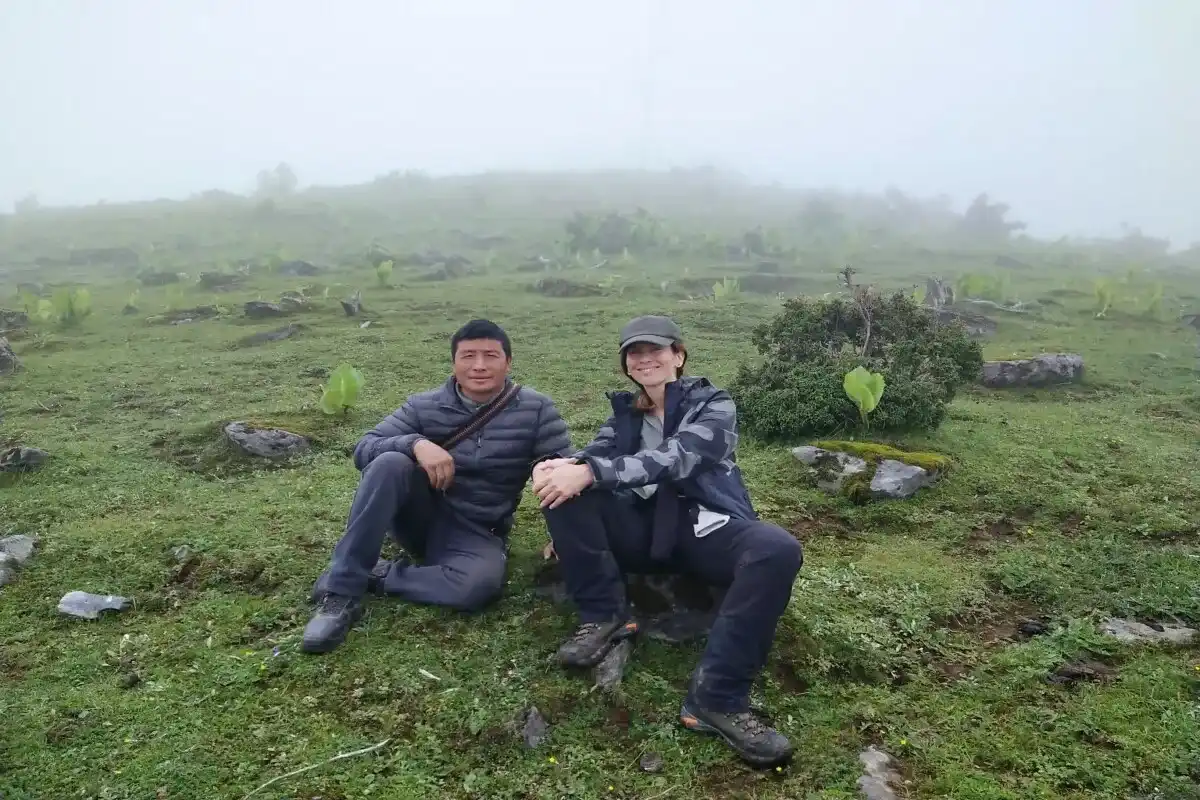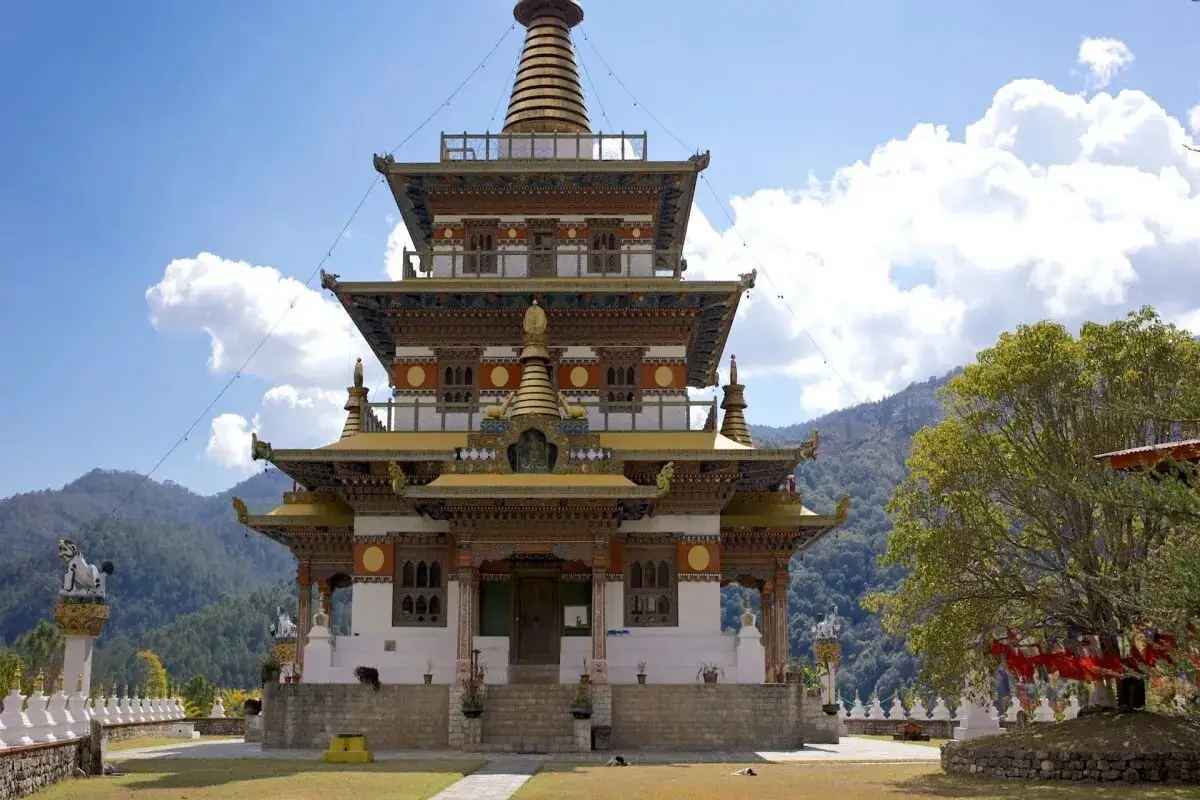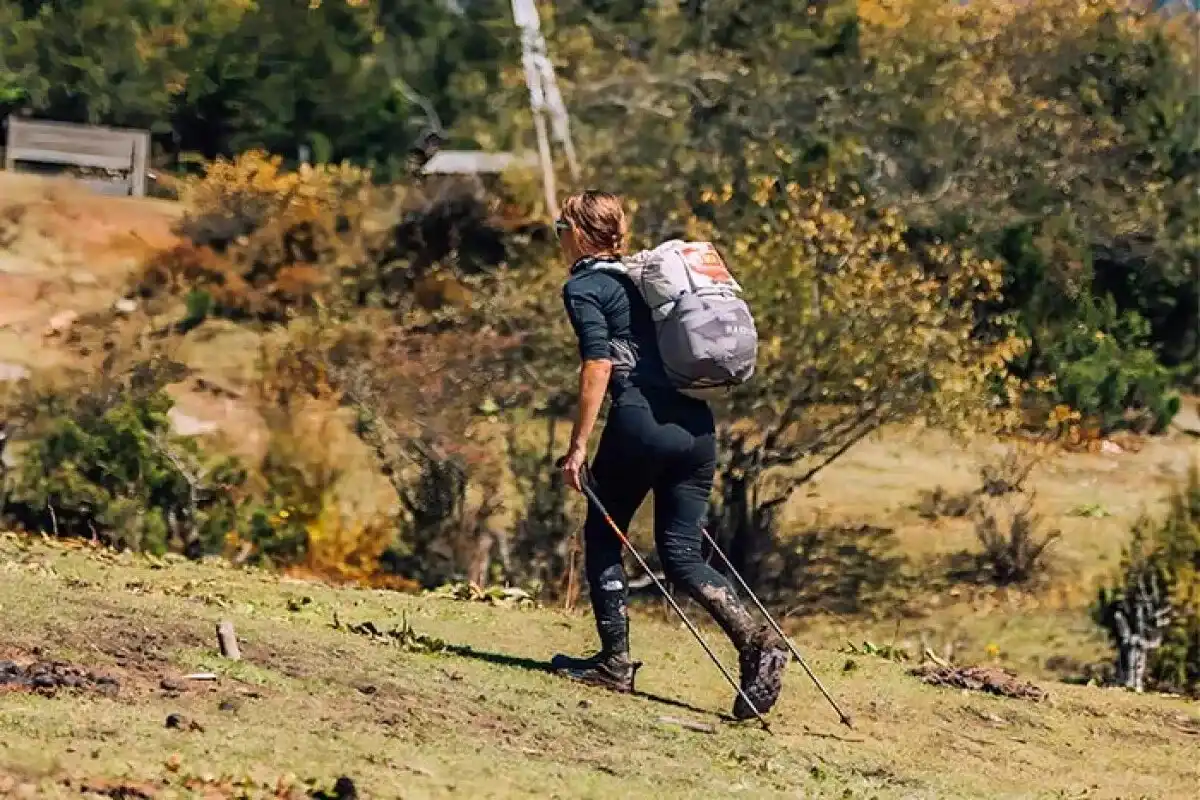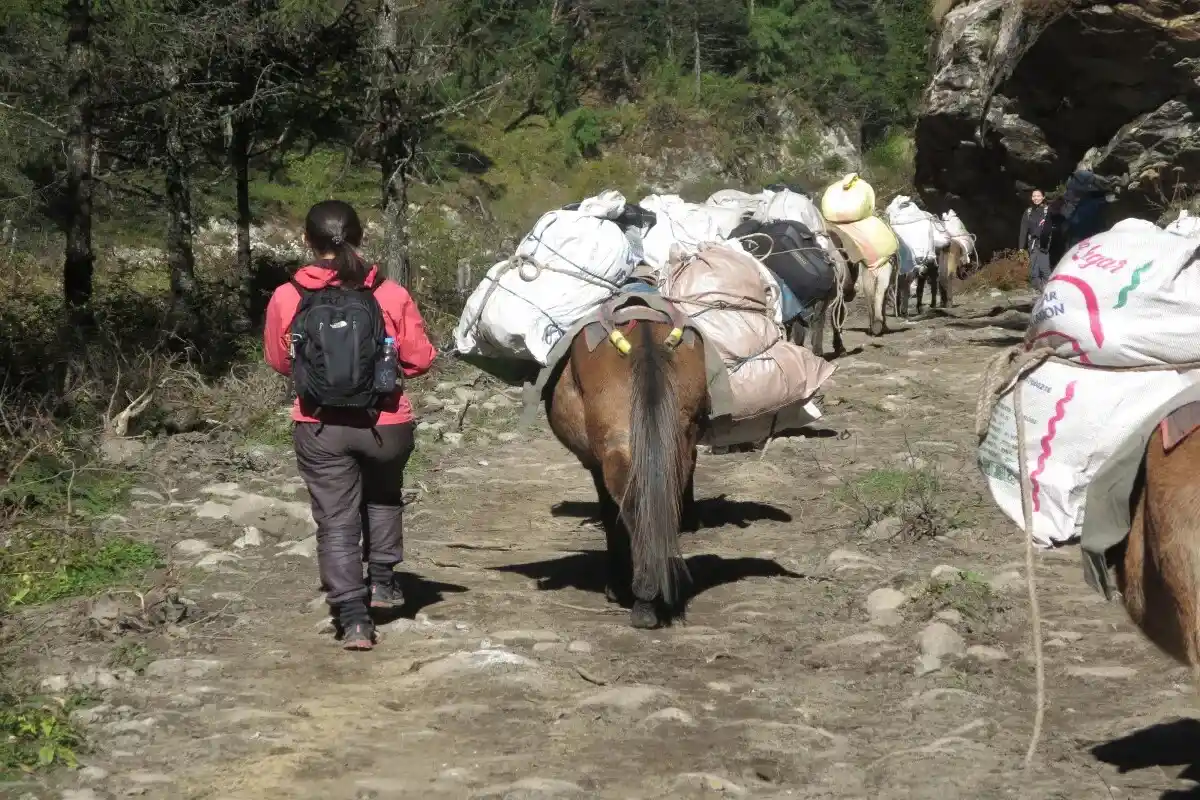Phobjikha Valley and Gangtey Trek - 6 Days
The Phobjikha and Gangtey trek in Bhutan is a peaceful and beautiful experience, and it is ideal for travelers who want to explore nature, culture, and silence. This is a gorgeous valley that is located at an altitude of approximately 3,000 meters, away from busy cities, and is surrounded by forests, farms, and rolling hills. It is also among the few locations in the world where the endangered black-necked cranes take rest in winter.
Highlights of the tour
- Peaceful Phobjikha Valley
- Gangtey Monastery Visit
- Black-Necked Crane Watching
- Gentle and Scenic Nature Trail
- Meeting Friendly Local People
Trip Overview
This 6-day trip is not very difficult, which is why it could be a good choice for beginning hikers or those who prefer to have a relaxed hike. You will pass through some tiny villages, you will encounter hospitable people, visit old monasteries, and you will have extensive panoramas of unexplored nature. On the way, you will listen to birds and the fresh mountain air, the peaceful energy of the Bhutanese countryside.
Gangtey Monastery is also among the most significant spiritual sites in Bhutan and will be visited on the trek. This trek will provide you with a unique experience, regardless of whether you want to have a nature retreat, a cultural trip, or simply need to take a break in your busy life. It is not just a walk, it is a heart-touching experience that remains in your mind even after coming back.
Highlights of the Phobjikha Valley and Gangtey Trek
Some highlights of Phobjikha and Gangtey trek are as mention below.
Peaceful Phobjikha Valley
Phobjikha Valley is a broad, silent valley that is surrounded by forested hills. It is a secret paradise where nature is untouched. You will come across yaks grazing, farmers working on the farms, and children playing freely. The valley is peaceful and good to have relaxing walks. During the early mornings, the fields are covered with mist, giving a dreamy view. As you sit and watch birds or relax, the serenity of this valley will give you a heart of peace and happiness.
Gangtey Monastery Visit
Gangtey Monastery is a proud structure that is situated on a small hill and overlooks the beautiful Phobjikha Valley. It is a unique place for meditation, prayer, and a peaceful place. This monastery was constructed during the 17th century, and it is rich in colorful paintings, prayer wheels, and kind-natured monks. Visitors are allowed to listen to the monks chanting, or they can light a butter lamp to have blessings. The spiritual power of this location and the silence of the places make you feel relaxed and connected, even when you do not have any experience of visiting a monastery before.
Black-Necked Crane Watching
The rare black-necked cranes come to Phobjikha Valley every winter. Black necked cranes are beautiful birds you may get to see in Bhutan. The locals even welcome their arrival with songs and dances. They can be observed at a distance, or you can have a visit to the Black-Necked Crane Information Centre to get more knowledge about them. It is magical to see them fly or walk in a graceful manner through the valley. It is a gentle message on how humans and nature can co-exist.
Gentle and Scenic Nature Trail
Gangtey Nature Trail is a small and beautiful pathway through the forests, open lands, and small villages. It is simple and suitable for any age group. You will see the whole valley and listen to birds singing all along the trail, and even encounter local farmers. It has no large climbs, only a nice and beautiful trail in nature. This path helps you slow down, take deep breaths, and admire the beauty of the simplicity of Bhutan.
Meeting Friendly Local People
Meeting people living in the valley and villages is one of the most special parts of this trek. They are simple, happy people who are close to nature. You can stay in their houses, eat a meal, or drink some warm butter tea by the fire. They are very friendly as they are always smiling, and they like to tell stories. You feel at home even when you are not in your own country because of their friendly nature and the peaceful way of life.
Why Choose the Gangtey Trek?
Gangtey Trek is a perfect short trek in Bhutan as it is the best trek option to enjoy nature without tough climbing. It is quiet, scenic, and not very exhausting. The hiking trail is easy, and it leads you through forests, small towns, open fields, and lovely valleys. You will have a chance to experience life in the countryside of Bhutan and to meet friendly local people on your way.
It is also a good trek to do on your first time or with family. You do not have to be really fit and/or have experience of hiking. You walk, every day, 4 or 5 hours at an easy, slow pace.
There is no doubt that the combination of nature, culture, and spiritual peace is what makes this trek so special. You will go to the renowned Gangtey Monastery, observe winter cranes (black-necked cranes), and spend some serene time in nature. It is the best option when you want to have a short but significant adventure in Bhutan.
Responsible Trekking Tips in Bhutan
Bhutan is a nation that values nature and culture so much, and therefore, it is desirable to travel responsibly. Do not harm any plants and avoid damaging the land. Carry a reusable water bottle rather than the plastic ones.You must be good to animals and birds; do not feed or chase them, just watch them. Particularly at Phobjikha Valley, one should not disrupt the black-necked cranes.
Be respectful to local people and their culture. Never take photos of people or religious places without asking. Wear neat clothes, particularly in case you are going to temples or monasteries. Contribute to the local communities by staying in homestays, purchasing local food, and handmade products.
As a responsible traveler, you will preserve the Bhutanese natural beauty and benefit the people living in that country. Even little things you do can be great.
Conclusion
The Phobjikha Valley and Gangtey Trek is not only a trekking tour in the mountains, but a peaceful experience that touches your heart. Everything is peaceful and purposeful, starting with the serene beauty of the valley and ending with the welcoming smiles of the local villagers. The soft path will lead you through the forests, open fields, little villages, and one of the most sacred monasteries of Bhutan. It is an ideal destination for those who enjoy nature, to relax, or for those who are beginners in trekking.
The trek will also provide you with an opportunity to view the rich culture and simple lifestyle of Bhutan. The special moments that you will experience include sharing tea with locals, viewing black-necked cranes in winter, enjoying fresh mountain air, and many more. It is not a tough hike, and you do not have to be a super-fit or experienced person.
This 6-day trip is not very difficult, which is why it could be a good choice for beginning hikers or those who prefer to have a relaxed hike. You will pass through some tiny villages, you will encounter hospitable people, visit old monasteries, and you will have extensive panoramas of unexplored nature. On the way, you will listen to birds and the fresh mountain air, the peaceful energy of the Bhutanese countryside.
Gangtey Monastery is also among the most significant spiritual sites in Bhutan and will be visited on the trek. This trek will provide you with a unique experience, regardless of whether you want to have a nature retreat, a cultural trip, or simply need to take a break in your busy life. It is not just a walk, it is a heart-touching experience that remains in your mind even after coming back.
Highlights of the Phobjikha Valley and Gangtey Trek
Some highlights of Phobjikha and Gangtey trek are as mention below.
Peaceful Phobjikha Valley
Phobjikha Valley is a broad, silent valley that is surrounded by forested hills. It is a secret paradise where nature is untouched. You will come across yaks grazing, farmers working on the farms, and children playing freely. The valley is peaceful and good to have relaxing walks. During the early mornings, the fields are covered with mist, giving a dreamy view. As you sit and watch birds or relax, the serenity of this valley will give you a heart of peace and happiness.
Gangtey Monastery Visit
Gangtey Monastery is a proud structure that is situated on a small hill and overlooks the beautiful Phobjikha Valley. It is a unique place for meditation, prayer, and a peaceful place. This monastery was constructed during the 17th century, and it is rich in colorful paintings, prayer wheels, and kind-natured monks. Visitors are allowed to listen to the monks chanting, or they can light a butter lamp to have blessings. The spiritual power of this location and the silence of the places make you feel relaxed and connected, even when you do not have any experience of visiting a monastery before.
Black-Necked Crane Watching
The rare black-necked cranes come to Phobjikha Valley every winter. Black necked cranes are beautiful birds you may get to see in Bhutan. The locals even welcome their arrival with songs and dances. They can be observed at a distance, or you can have a visit to the Black-Necked Crane Information Centre to get more knowledge about them. It is magical to see them fly or walk in a graceful manner through the valley. It is a gentle message on how humans and nature can co-exist.
Gentle and Scenic Nature Trail
Gangtey Nature Trail is a small and beautiful pathway through the forests, open lands, and small villages. It is simple and suitable for any age group. You will see the whole valley and listen to birds singing all along the trail, and even encounter local farmers. It has no large climbs, only a nice and beautiful trail in nature. This path helps you slow down, take deep breaths, and admire the beauty of the simplicity of Bhutan.
Meeting Friendly Local People
Meeting people living in the valley and villages is one of the most special parts of this trek. They are simple, happy people who are close to nature. You can stay in their houses, eat a meal, or drink some warm butter tea by the fire. They are very friendly as they are always smiling, and they like to tell stories. You feel at home even when you are not in your own country because of their friendly nature and the peaceful way of life.
Why Choose the Gangtey Trek?
Gangtey Trek is a perfect short trek in Bhutan as it is the best trek option to enjoy nature without tough climbing. It is quiet, scenic, and not very exhausting. The hiking trail is easy, and it leads you through forests, small towns, open fields, and lovely valleys. You will have a chance to experience life in the countryside of Bhutan and to meet friendly local people on your way.
It is also a good trek to do on your first time or with family. You do not have to be really fit and/or have experience of hiking. You walk, every day, 4 or 5 hours at an easy, slow pace.
There is no doubt that the combination of nature, culture, and spiritual peace is what makes this trek so special. You will go to the renowned Gangtey Monastery, observe winter cranes (black-necked cranes), and spend some serene time in nature. It is the best option when you want to have a short but significant adventure in Bhutan.
Responsible Trekking Tips in Bhutan
Bhutan is a nation that values nature and culture so much, and therefore, it is desirable to travel responsibly. Do not harm any plants and avoid damaging the land. Carry a reusable water bottle rather than the plastic ones.You must be good to animals and birds; do not feed or chase them, just watch them. Particularly at Phobjikha Valley, one should not disrupt the black-necked cranes.
Be respectful to local people and their culture. Never take photos of people or religious places without asking. Wear neat clothes, particularly in case you are going to temples or monasteries. Contribute to the local communities by staying in homestays, purchasing local food, and handmade products.
As a responsible traveler, you will preserve the Bhutanese natural beauty and benefit the people living in that country. Even little things you do can be great.
Conclusion
The Phobjikha Valley and Gangtey Trek is not only a trekking tour in the mountains, but a peaceful experience that touches your heart. Everything is peaceful and purposeful, starting with the serene beauty of the valley and ending with the welcoming smiles of the local villagers. The soft path will lead you through the forests, open fields, little villages, and one of the most sacred monasteries of Bhutan. It is an ideal destination for those who enjoy nature, to relax, or for those who are beginners in trekking.
The trek will also provide you with an opportunity to view the rich culture and simple lifestyle of Bhutan. The special moments that you will experience include sharing tea with locals, viewing black-necked cranes in winter, enjoying fresh mountain air, and many more. It is not a tough hike, and you do not have to be a super-fit or experienced person.
Short Itinerary
Arrive in Phobjikha Valley, explore the valley and visit the Black-Necked Crane Center
Visit Gangtey Monastery and trek through pine forests to Gogona village
Trek from Gogona to Khotokha Valley through oak and bamboo forests
Descend from Khotokha to Chuzomsa and drive back to Phobjikha or Punakha
Relaxing exploration of Phobjikha Valley, visit Khewang Lhakhang and local weavers
Drive back to Punakha or Thimphu with scenic stops along the way
Phobjikha Valley and Gangtey Trek Itinerary
Phobjikha Valley is a peaceful and beautiful valley that you will reach after a wonderful drive from Punakha or Thimphu. Spend your day walking around the wide valley, breathing in the fresh air, and visiting local farms. It has an easy and short walk known as the Gangtey Nature Trail, where you can enjoy the views. You should not miss the Black-Necked Crane Center, which is a place where you can find out about the special birds that live in the valley. You will spend your night this day in a farmhouse or guesthouse in the evening and get a warm and homemade meal.
Start your day by visiting Gangtey monastery, a spiritual center that is located above the valley. Thereafter, begin your trek to Gogona village. The path takes you through pine trees, fields, and peaceful countryside. You can also see yaks and local farmers on the way. It is an easy and pleasant walk and takes about 4 to 5 hours. You will spend the night at the farmhouse or tented camp in and around Gogona, surrounded by nature and traditional village life.
In the walk of today, you are taken further into the quiet countryside of Bhutan. You will go through forests of oaks and bamboo trees, and you will get a view of the mountains in the background. The path winds up and down into the picturesque Khotokh Valley. This is a peaceful region with green fields and forests. You will find the traditional houses and friendly people with a simple life. Spend a peaceful night in a nearby homestay or tented camp and enjoy the chirping of birds and nature.
The final day of climbing will be on the downhill track through cool forests with tall trees and fresh air. You can cross streams and see prayer flags waving in the air. After completion of your trek from Khotokha to Chuzomsa, you will head back to Phobjikha or Punakha to have a restful night. Soak yourself in a hot bath, have a hot meal, and rest your body after the trek.
This day is to be spent slowly exploring more of the Phobjikha Valley. See local family, visit nearby temples such as Khewang Lhakhang, where people can see weavers creating traditional textiles. In case it is winter, it is worth taking the opportunity of having a closer look at the black-necked cranes. Go out and have a walk, or simply sit back and have tea and read a book, and have a view of the mountains. This is when you need to slow down and absorb the peaceful beauty of Bhutan before you leave this magic land.
After breakfast, it’s time to say goodbye to the serene Phobjikha Valley. You will drive back to Punakha or Thimphu, going through forests, green hills, and small villages on the way. You can make stops at the beautiful viewpoints to take your last photos and breathe in the cool mountain air. Even though your journey is over here, the memories of peaceful strolls, good people, and lovely nature will stay with you forever. You will return home feeling happy, refreshed, and moved by the magnificence of Bhutan.
Know Before You Travel
-
Best season for the trip:
Gangtey Trek can be best done between March to May and September to November. The forests are also colorful with flowers such as rhododendrons and magnolias in spring. The weather is cool and clear, and one can enjoy the walk. In autumn, there are blue skies, fresh air, golden fields, and a perfect view for taking beautiful photos and a pleasant for trekking.
A visit from late October to February is also suitable, if you want to view the famous black-necked cranes. These are special birds that come to Phobjikha Valley in winter. It is magical to see the valley in mists and mornings and hear birds calling in the fields.
Summer (June to August) is not considered to be suitable for the trek as it is the rainy season, and the paths are muddy and slippery. Winter (December-February) can be cold yet calm. If you do not mind the cold weather, you can plan for trek.
Therefore, it is better to go trekking in spring or autumn, when you can admire beautiful views, nice weather, and much natural beauty.
FAQs for Phobjikha Valley and Gangtey Trek
No, the Gangtey Trek is one of the easiest treks in Bhutan. It is not too long, and the hikes are not that steep. The average person walks 4 to 5 hours a day at a slow, comfortable speed. It is great for beginners.
Yes ,you have to be fit. It will be fine, as long as you are able to walk for a few hours with short breaks. Before you travel, you can start practising a light walk and exercise.
The best time for this trek is between March to May and September to November. The weather is clear, and the views are beautiful. To visit black-necked cranes, go from late October to February.
This trek is at an altitude of approximately 3,000 meters. Altitude sickness is not experienced by most people here since the climb is gradual. Drink water, take a break when you feel the need to do so, and you should feel fine.
You will be sleeping in tented camps or simple farmhouses in the villages. These are comfortable and warm places. In Phobjikha Valley, there are comfortable guesthouses where you can have hot food and heaters.
No, Bhutan needs tourists to come in with a licensed guide and tour company. This assists you to be safe, and it also promotes local employment. So, we are here to plan your trip, ensuring the safety measures.
Pack extra layers of clothes in case it gets cold, a warm jacket, a rain jacket, hiking boots, gloves, sunscreen, and a refillable water bottle. Bring along personal medicine, snacks, and a headlamp on camp nights as well.
You need a visa and all necessary permits for your trip. These documents can not be received on the day of your arrival, so they must be processed before coming here. After you book a trip with us, we will manage these papers for you. Your Bhutan visa is arranged by Orrog as part of the package.
The main way to come to Bhutan is through Paro International Airport, which is well-connected to cities like Bangkok, Delhi, Kathmandu, and Singapore. Most people arrive by air, but if you plan to come via road, you can enter through Phuentsholing, located on the southern border with India, which is the most commonly used entry point.
It is recommended to apply for the visa at least 20 days before your planned departure date so that there is enough time for processing your Bhutan visa, finalizing your itinerary, and arranging your guides and transportation. Although visa processing itself is relatively fast once payment is received, early preparation helps avoid delays and ensures availability, especially during peak seasons (spring and autumn).
You don’t require a passport-size photo for the visa, but it is wise to carry at least 2–4 recent passport-sized photographs during your trip. These may be needed for local permits, registration, or when applying for a local SIM card upon arrival in Bhutan.
Yes, you can lengthen your stay in Bhutan either before or after your trip. Bhutan’s tourism model requires visitors to pay a Sustainable Development Fee (SDF) and a daily package cost, so any extra days will involve additional charges. Extensions are a great opportunity to explore cultural sites in Paro, Thimphu, or even add another short trip or day hike.
Yes, Bhutan requires full tour payment in advance before your visa can be processed and issued. The government of Bhutan regulates this policy to ensure that all travel arrangements are confirmed through a licensed Bhutanese tour operator. We are a licensed tour operator that ensures you have everything you need for a trouble-free trip.
Any personal expenses are not covered in the package like:
- Tips for your guide and other staff
- Bottled drinks and snacks(personal expense)
- Souvenirs or local crafts
Credit cards are easily accepted in major cities like Paro and Thimphu. But in remote areas, you may not have access to a card or an ATM. So, it is best to carry some cash before heading for the trip.
Tipping is not mandatory, but it is a widely appreciated gesture and a customary way to show gratitude for good service. The tipping guideline would be to give USD 5-10 per day as a tip for the guides and other staff.
Paro International Airport is the only international airport in Bhutan. It is well connected by flights from cities like Bangkok, Delhi, Kathmandu, and Singapore.
Yes, airport pick-up and drop-off are included in the package. We will have your guide and driver meet you at the airport and transport you to your hotel.
While Bhutan's roads are mostly paved, some parts are narrow, winding, and occasionally affected by weather. However, we ensure your travel is safe, well-maintained, and driven by an experienced professional throughout the journey.
The Bhutanese Ngultrum is used in Bhutan. All local transactions during the trip will be in BTN.
US Dollars (USD) are generally accepted at larger hotels, souvenir shops, and tour operators, particularly in Paro and Thimphu. However, it’s advisable to convert your currency to BTN for general purchases in rural areas. Other currencies like the Euro or the Pound are not commonly accepted directly.
No, credit or debit cards are not accepted on the trip, as it takes you through remote regions with no banking or electronic payment access. All trip-related payments like accommodation, meals, permits, etc, are paid in advance.
You can exchange foreign currency at the Paro International Airport, at banks, or through licensed money changers in cities like Thimphu and Paro. It's best to exchange enough cash before heading out on the trip.
The national language is Dzongkha, but many Bhutanese also speak English. If you speak English and are worried about communicating with the local people, you will have your guide as a translator.
Yes, all licensed tour guides in Bhutan are required to speak fluent English. Many are also trained in other languages such as German, Japanese, or French. Communication during the trip will be smooth and clear in English.
Most signboards, tourist maps, and information brochures are written in English, especially in tourist destinations like Paro, Thimphu, and trailheads. Directional signs along routes are often labeled in both Dzongkha and English.
No, learning Dzongkha is not at all needed for the trip, but knowing a few basic words like "Kuzu zangpo la" (Hello) or "Kadrinche la" (Thank you) is a good way to interact with the locals.
Language barriers are minimal, as your guide will handle all communication with locals and support staff. Your guide will translate for you during your interaction with the locals.
To greet people, you can greet with locals “Kuzu zangpo la” (Hello) by performing a slight bow. Most common greetings include physical greetings, such as shaking hands less visible, especially in rural areas.
Yes, but remember to seek permission, especially when taking photos of monks, locals, or temples. Please note that clicking photos is not allowed at most religious sites.
Visitors should dress modestly and respectfully. This means:
- Covering shoulders and knees
- Removing hats and sunglasses
- Not wearing shorts or sleeveless tops
This applies to both men and women.
Yes, Bhutanese society is deeply rooted in Buddhism and tradition. Here are some key taboos:
- Do not point your feet at people or sacred objects
- Never touch anyone on the head, as it is considered sacred
- Walk clockwise around temples, stupas, and religious monuments
- Avoid public displays of affection
While gifts are not expected, they may be accepted graciously if given with respect. It is advisable to consult with the guide before giving out anything.
Bhutan typically uses Type C, Type D, and Type G electrical outlets. Standard safe voltage is 230V and frequency is 50Hz; therefore, ensure that your equipment is compatible with this voltage.
Indeed, it is highly advised to take along a universal travel adapter, particularly one to fit a variety of types of plugs, because plugs can be different in a hotel or a guesthouse.
No, it's not advisable to use power-consuming appliances like hairdryers during the trip due to very less access to electricity and the risk of overloading small power sources in rural lodges or camps.
Charging facilities are limited during the travel days, particularly once you leave Paro. It’s a good idea to bring a high-capacity power bank to keep essential electronics like cameras or phones powered.
Power supply in towns like Paro and Thimphu is generally stable, but occasional power cuts do happen, especially during storms or in rural areas. It's wise to charge your devices whenever electricity is available.
Bhutan follows Bhutan Time (BTT), which is UTC/GMT +6 hours. This time zone remains consistent throughout the year.
No, Bhutan does not observe daylight saving time. The country maintains the same time year-round.
Bhutan is 30 minutes ahead of India. For example, 12:00 PM in India is 12:30 PM in Bhutan.
Yes, snow is quite likely, especially at higher elevations, which are above 4,800 meters. If you trek during late autumn (October–November) or early spring (March–April), you may encounter snowfall. During the peak of spring (April–May) and autumn (September–early October), trails are usually clear, although sudden weather changes in the mountains can still bring unexpected snow showers. You should always be prepared for cold conditions and potential snowfall, regardless of the season.
No, Treks are not accessible throughout the year. The trail is generally closed during the winter(December- February) due to heavy snowfall that makes high mountain passes impassable and increases the risk of avalanches and extreme cold.
Since the weather can be unpredictable and temperatures can vary drastically, layered clothing is essential. You should pack:
- Base layers (thermal tops and bottoms)
- Insulating layers like fleece or down jackets
- Waterproof and windproof outer layers
- Warm hats, gloves, and neck gaiters for freezing conditions
- Moisture-wicking socks and weatherproof trekking boots
The weather is clear with mild daytime temperatures during spring and autumn. But you will be travelling in high altitudes, so it is necessary to carry enough clothing because you will encounter lower temperatures. The nights are freezing cold at high altitudes. So, pack accordingly.
This trek is classified as moderate to strenuous, basically due to its location, the long trail, and several days of camping. The track, although not tough, is more suited to people who have earlier hiking or trekking experience. Beginners with good fitness and determination can still complete the trek, but we recommend undertaking some pre-trip training, such as having a long walk or doing some cardio exercises.
This trip is mainly for people aged between 12 and 65. But if you are physically fit and have the willpower to complete this trek, you can complete this trek because we will be there to help you in case of any problem.
A Medical certificate is not mandatory, but a health check-up is advised. Since the trek reaches altitudes over 4,800 meters (15,750 feet), you can have a normal checkup before the trek to make sure that you have no ongoing issues.
Yes, your children can join the trek if they are in good physical condition, which requires walking for a few hours every day. They should have parental guidance during the trek.
Yes, senior citizens can participate, given that they are fit to complete this trek. A visit to the Doctor is strongly advised, and seniors should engage in pre-trek training to improve stamina and cardiovascular health.
During this Trek, you will stay in tented camps at remote, scenic campsites along the trail. These camps are fully supported and managed by us. Before and after the trek, you will stay in comfortable hotels or guesthouses in Paro and Thimphu. All accommodations are arranged by us as part of your package.
Yes, all campsites are carefully chosen, keeping safety, cleanliness, and hygiene in mind. Orrog follows strict sanitation practices, including setting up toilet tents, safe waste disposal, and clean food preparation areas. You’ll also be accompanied by well-trained staff to ensure your safety during the trip.
Yes, we provide a high-quality sleeping bag in the package, which is suitable for sub-zero temperatures of the high-altitude regions. However, you can bring your sleeping bag if you prefer additional comfort or hygiene.
Yes, hot water for drinking is available at camps, but not hot water for showers. You can carry biodegradable wet wipes for convenience.
Each campsite is equipped with portable toilet tents or simple pit latrines, maintained by the support team to ensure cleanliness and privacy. While they are basic, they are safe, hygienic, and environmentally conscious. It is advisable to carry your toilet paper, hand sanitizer, and eco-friendly toiletries to maintain hygiene during the trek.
If you experience symptoms such as headache, nausea, dizziness, or fatigue, your guide will have you rest, hydrate, and monitor your condition closely. If symptoms worsen, you will be taken to a lower altitude immediately, which is the most effective treatment. All treks are designed with gradual altitude gain and acclimatization days to minimize the risk.
Yes, emergency helicopter evacuation is available in Bhutan and can be arranged in serious cases such as severe altitude sickness or injury. However, helicopter rescue is costly and not included in standard trek packages, so having travel insurance that covers emergency evacuation is mandatory. Guides and tour operators are trained to handle emergencies efficiently and will contact authorities for evacuation if needed.
This trek is moderate to tough with 6–8 hours of walking per day across rugged terrain and steep trails. The altitude, length, and remote conditions require good physical fitness and preparation.
Yes, emergency helicopter evacuation is available in Bhutan and can be arranged in serious cases such as severe altitude sickness or injury. However, helicopter rescue is costly and not included in standard trek packages, so having travel insurance that covers emergency evacuation is mandatory. Guides and tour operators are trained to handle emergencies efficiently and will contact authorities for evacuation if needed.
Yes, travel insurance is mandatory for all international travelers visiting Bhutan, especially for those trekking at high altitudes. Your insurance must cover:
- Emergency medical treatment
- High-altitude trekking (above 4,000 meters)
- Helicopter evacuation and return to the home country
- Trip cancellation or delay
Proof of insurance may be requested before your visa is processed. Make sure to read your policy details carefully or consult with your insurance provider before travel.
Yes, travel insurance is mandatory for this trek. Your policy must include coverage for high-altitude trekking (above 4,000 meters), medical emergencies, and helicopter evacuation, as these services can be very costly in remote Bhutanese terrain. Proof of insurance may be required by your tour operator before confirming the trek.
Mobile network coverage is extremely limited along the Trek. While you may get occasional signal in some lower-altitude areas or villages, most of the trail is out of range, especially near the high passes and campsites. It’s best to inform family and friends that you may be offline for several days.
Charging facilities are not available on the trail since the trek passes through remote and non-electrified areas. It is strongly recommended to bring a high-capacity power bank or a solar charger to power essential devices like phones or cameras during the journey.
Yes, you should bring personal gear such as trekking boots, warm and waterproof clothing, gloves, hats, and a sleeping bag. The other necessary items will be managed by us.
Meals are prepared fresh daily by the trek support team and typically include Bhutanese and Tibetan-style dishes like rice, curries, noodles, soups, vegetables, and occasional meat. Tea, coffee, and snacks are also provided. If you have diet restrictions (vegetarian, vegan, gluten-free, etc.), inform your tour operator in advance so arrangements can be made.
Trekking in Bhutan follows strict environmental protocols, including the “Leave No Trace” principle. All trash is collected and carried out by the support team. Trekkers are expected to avoid littering and carry personal non-biodegradable waste, such as snack wrappers or batteries, back to base.
Yes, safe drinking water is provided each day. You are also encouraged to bring a refillable water bottle and, optionally, water purification tablets or a filtration bottle for additional safety and convenience.
You can prevent Altitude sickness by following these tips:
- Ascend gradually and allow time for acclimatization
- Drink plenty of fluids, preferably water and warm drinks
- Avoid alcohol and caffeine
- Eat light but frequent meals
- Communicate with your guide immediately if you feel unwell
Common symptoms include:
- Headache
- Nausea or vomiting
- Dizziness or light-headedness
- Shortness of breath
- Loss of appetite
- Fatigue or difficulty sleeping
Occasionally, you might meet villagers selling handmade items like yak wool scarves or woven baskets near campsites or small settlements. These are authentic and support local communities.
Only some larger shops in cities like Paro and Thimphu accept credit cards. The remote areas might not have a card payment option, so we suggest that you carry some cash.
Yes, souvenirs can be bought in Paro or Thimphu before or after the trip.
Some popular souvenirs include hand-woven textiles (kira and gho fabric), prayer flags, thangka (religious scroll) paintings, handmade paper products, traditional masks, and Buddhist artifacts.
You can do some gentle bargaining in local street markets. However, in government-run shops and fixed-price stores, prices are usually non-negotiable.
Yes, it is highly recommended to inform friends and family before the trip that you will be offline for several days, so they are not concerned by the lack of communication.
B-Mobile (by Bhutan Telecom) and TashiCell are the two main service providers. B-Mobile tends to have better coverage in rural and mountainous areas.
Yes, you can easily purchase a SIM card upon arrival in Bhutan. We will assist you with the process, and you'll need a passport copy and a passport-sized photo.
No, internet access is not available during the trip. However, Wi-Fi is available in hotels in Paro and Thimphu before and after the trip.
Reviews & Ratings
-
Guarantee -
Thimphu,Bhutan -
975+17160228
Ready to Explore Bhutan?
Start your journey today and discover the magic of Bhutan with our expert guides and carefully crafted tours.
Book This Trip
-
No booking or credit card fees -
Best price guarantee -
Full customize trip
Ask a Question
Feel free to ask us anything about this tour. A travel expert will then get back to you as soon as possible
Ready to Explore Bhutan?
Start your journey today and discover the magic of Bhutan with our expert guides and carefully crafted tours.

